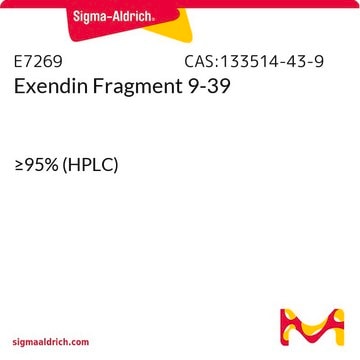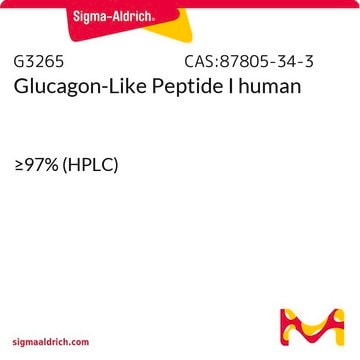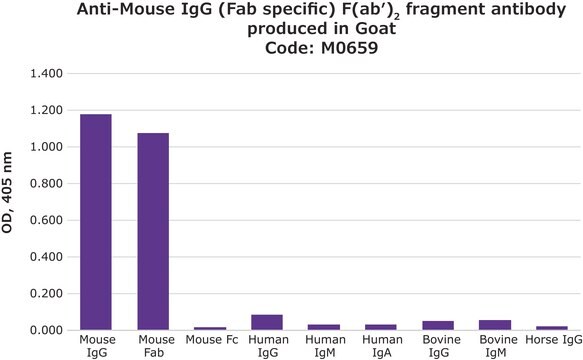F2772
Anti-Mouse IgG (Fc specific) F(ab′)2 fragment−FITC antibody produced in goat
flow cytometry grade, affinity isolated antibody, buffered aqueous solution
About This Item
Empfohlene Produkte
Biologische Quelle
goat
Konjugat
FITC conjugate
Antikörperform
affinity isolated antibody
Antikörper-Produkttyp
secondary antibodies
Qualität
flow cytometry grade
Klon
polyclonal
Form
buffered aqueous solution
Lagerbedingungen
protect from light
Methode(n)
flow cytometry: 1:100
immunohistochemistry (formalin-fixed, paraffin-embedded sections): 1:160
Lagertemp.
−20°C
Posttranslationale Modifikation Target
unmodified
Suchen Sie nach ähnlichen Produkten? Aufrufen Leitfaden zum Produktvergleich
Allgemeine Beschreibung
Fluorescein isothiocyanate (FITC) is a fluorescein derivative (fluorochrome) used to tag antibodies, including secondary antibodies, for use in fluorescence-based assays and procedures. FITC excites at 495 nm and emits at 521 nm.
Anti-mouse IgG is conjugated to Fluorescein Isothiocyanate (FITC), Isomer I. The F(ab′)2 antibodies isolated from goat antiserum by affinity chromatography, react specifically with mouse IgG Fc; does not bind other mouse Igs. No cross reaction is observed with mouse Fab fragment. The antibody shows minimal cross reaction with human, horse and bovine proteins on tissue or cell preparations.
Spezifität
Immunogen
Anwendung
- flow cytometry for labelling of human peripheral blood lymphocytes (dilution of 1:100) and label human polymorphonuclear cells (PMNs) (dilution of 1:50).
- immunocytochemistry using human embryonic stem cells
- immunohistochemistry at a working dilution of 1:160.
Immunohistology: A minimum dilution of 1:160 is determined by indirect immunofluorescence on formalinfixed, and paraffin-embedded human tonsil using mouse monoclonal anti-human IgG as the primary antibody.
Biochem./physiol. Wirkung
Sonstige Hinweise
Physikalische Form
Angaben zur Herstellung
Useful when trying to avoid background staining due to the presence of Fc receptors.
Haftungsausschluss
Not finding the right product?
Try our Produkt-Auswahlhilfe.
Lagerklassenschlüssel
10 - Combustible liquids
WGK
nwg
Flammpunkt (°F)
Not applicable
Flammpunkt (°C)
Not applicable
Persönliche Schutzausrüstung
Eyeshields, Gloves, multi-purpose combination respirator cartridge (US)
Analysenzertifikate (COA)
Suchen Sie nach Analysenzertifikate (COA), indem Sie die Lot-/Chargennummer des Produkts eingeben. Lot- und Chargennummern sind auf dem Produktetikett hinter den Wörtern ‘Lot’ oder ‘Batch’ (Lot oder Charge) zu finden.
Besitzen Sie dieses Produkt bereits?
In der Dokumentenbibliothek finden Sie die Dokumentation zu den Produkten, die Sie kürzlich erworben haben.
Kunden haben sich ebenfalls angesehen
Unser Team von Wissenschaftlern verfügt über Erfahrung in allen Forschungsbereichen einschließlich Life Science, Materialwissenschaften, chemischer Synthese, Chromatographie, Analytik und vielen mehr..
Setzen Sie sich mit dem technischen Dienst in Verbindung.








